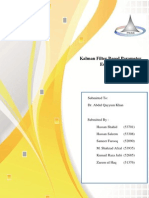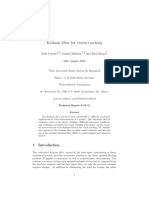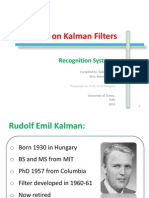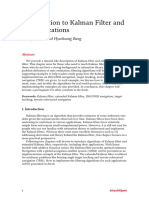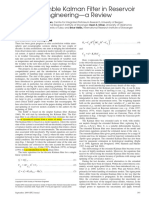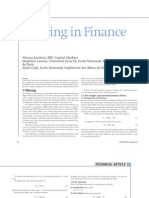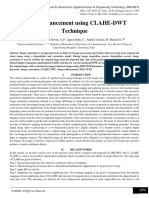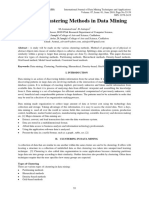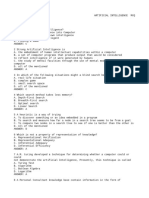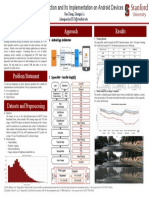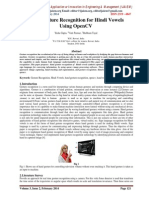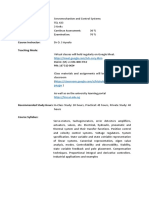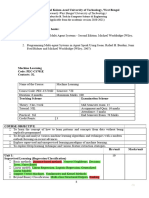0% found this document useful (0 votes)
278 views24 pagesKALMAN FILTER Applications in Image Processing
The Kalman filter is a recursive algorithm that estimates the state of a linear dynamic system from a series of noisy measurements over time. It has applications in image processing by modeling the image as a linear system corrupted by noise. The filter uses a predictor-corrector approach, predicting the next state using a time update and correcting it using a measurement update that incorporates new measurements. An extended Kalman filter handles nonlinear systems through linearization. Complex Kalman filtering represents images using complex numbers.
Uploaded by
Hayder KadhimCopyright
© © All Rights Reserved
We take content rights seriously. If you suspect this is your content, claim it here.
Available Formats
Download as PDF, TXT or read online on Scribd
0% found this document useful (0 votes)
278 views24 pagesKALMAN FILTER Applications in Image Processing
The Kalman filter is a recursive algorithm that estimates the state of a linear dynamic system from a series of noisy measurements over time. It has applications in image processing by modeling the image as a linear system corrupted by noise. The filter uses a predictor-corrector approach, predicting the next state using a time update and correcting it using a measurement update that incorporates new measurements. An extended Kalman filter handles nonlinear systems through linearization. Complex Kalman filtering represents images using complex numbers.
Uploaded by
Hayder KadhimCopyright
© © All Rights Reserved
We take content rights seriously. If you suspect this is your content, claim it here.
Available Formats
Download as PDF, TXT or read online on Scribd
/ 24

